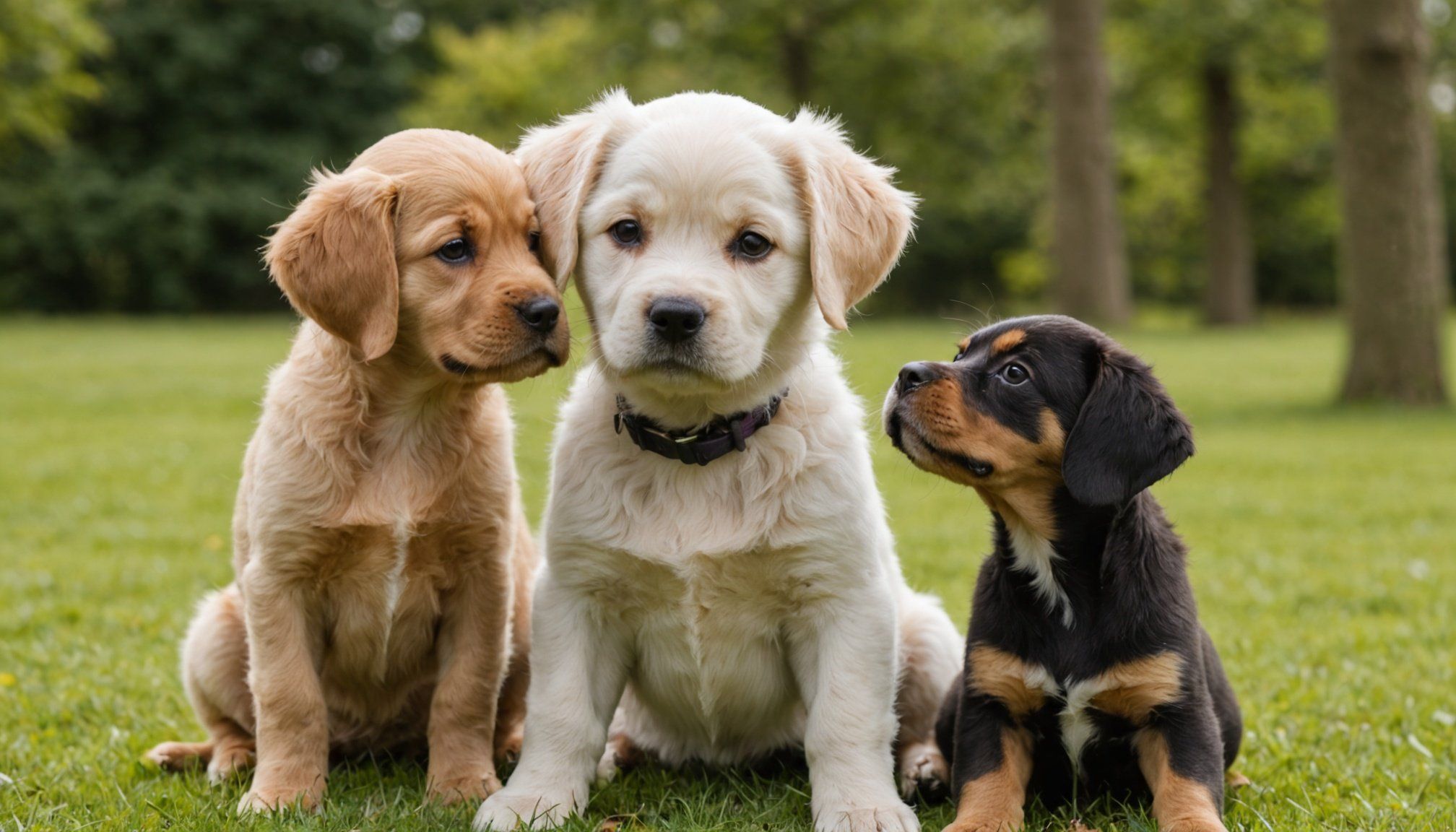Preparing Your Home for the New Puppy
Bringing a new puppy home can be as exciting as it is challenging. Creating a safe space for your puppy is paramount. Begin by designating a quiet area where your puppy can retreat when the hustle and bustle becomes overwhelming. A well-suited corner with a soft bed and a few toys offers a sense of security and belonging.
When introducing a puppy to an environment with an older dog, ensuring older dog adjustment is crucial. Observe the older dog’s response closely—looking for signs of stress or discomfort. Gauge the reaction and introduce interactions gradually to ease any tension. This helps foster a harmonious relationship between the new family member and the older dog.
Also read : Best Plants to Attract and Nurture British Peacock Butterflies in Your Garden
Creating separate areas for eating and sleeping is essential. Puppies have different dietary needs, and providing distinct spaces ensures each pet can dine without interference, reducing potential conflicts. Sleeping arrangements should also be separate at first, allowing both animals to rest without disruption. This practice not only comforts your puppy introduction but also maintains a routine for the older dog.
Setting boundaries and specific zones within your home supports smoother integration, ensuring both your new puppy and older dog can coexist peacefully.
Also read : Mastering Rat Tricks: Proven Techniques for Training Your Pet Rat Effectively
Understanding Behavioral Compatibility
When bringing a new dog into a home with an older canine, considering dog behavior and socialization is crucial. Recognizing signs of territorial behavior in mature dogs is the first step in ensuring a smooth transition. Older dogs may growl, bark, or display protective actions when they feel their space is invaded. Identifying these signs early can prevent potential conflicts.
Next, conducting a compatibility analysis includes assessing personality types of both dogs. Dogs generally fall into two categories: active or passive. Active dogs thrive on exercise and play, showing boundless energy, while passive dogs enjoy relaxation and calm environments. Matching an active dog with a similarly energetic companion can enhance their bond. However, combining an active dog with a passive one might require additional supervision and a tailored approach to their interaction.
Gradual introductions based on a behavior analysis can help ease tensions. Start by allowing the dogs to meet in neutral territory, reducing territorial aggression. If they exhibit calm and friendly behaviors, progress to more direct interactions. Regular positive reinforcement and patience are key during these sessions. By methodically understanding and managing their behaviors, owners can foster a harmonious relationship between their dogs.
Step-by-Step Introduction Strategies
Introducing a new puppy to your home can require some thought and preparation. Using effective puppy introduction methods ensures a smooth and successful interaction.
First Impressions and Initial Meetings
First impressions matter, even for puppies. Allow them to sniff and observe each other from a safe distance. This gradual introduction minimises stress and anxiety. Keep initial encounters short and positive to avoid overwhelming your puppy.
Controlled Introduction in Neutral Territory
Neutral territory is essential when introducing a new puppy to other pets. Use controlled introduction by meeting in a space not “owned” by existing pets, such as a park. Deploy leashes and gates to maintain control and prevent sudden movements that might upset either animal. These strategies can prevent territorial disputes.
Using Positive Reinforcement
Positive reinforcement is crucial in encouraging positive associations during puppy interactions. Use treats and praise when you observe good behaviour, such as calm sniffing or relaxed body posture. This approach helps your puppy form happy connections with new friends.
- Reward calm interactions
- Praise gently and consistently
- Avoid punishment
Introducing a puppy takes patience, but with the right methods, you can foster harmonious relationships from the beginning.
Socialization Techniques
Ensuring proper dog socialization is crucial for a well-adjusted pet. During the first few weeks, supervised interactions can significantly impact how a dog perceives other animals and environments. By managing interactions, you can prevent negative experiences that may hinder social development. Supervised socialization allows you to monitor your dog’s behaviour and intervene if necessary.
Encouraging play with other dogs is beneficial, yet it’s essential to keep a watchful eye on their energy levels to avoid over-excitement. By guiding these interactions, you can help dogs learn how to engage appropriately and understand social cues. This approach not only promotes positive interactions but also fosters self-confidence and reduces anxiety.
Incorporating consistent training tips into your routine can further aid in a dog’s adjustment process. Developing a consistent schedule not only provides structure but also helps reinforce positive behaviours. Consistency is key; routines enable dogs to anticipate what comes next, easing any potential stress a new environment may cause.
By focusing on careful management and creating a nurturing environment, dog owners can cultivate well-behaved and socially adept pets. Thoughtful supervision and routine establishment are essential strategies to ensure a smooth transition into a harmonious home life.
Monitoring Signs of Stress or Aggression
In the delicate process of introducing a new puppy to a household with an older dog, monitoring for stress signals is crucial. Dogs, like humans, express stress and discomfort in various ways. Common signs of stress in dogs include excessive panting, pacing, lip-licking, or changes in eating habits. Recognising these signs promptly can prevent potential conflicts or aggression.
Identifying Dog Behavior Changes
Careful observation of dog behavior is essential. If the older dog often withdraws or exhibits defensive body language, this might indicate discomfort or stress. Similarly, if the puppy hides or yelps frequently, it’s possible they are experiencing stress. Effective dog behavior monitoring helps intervention strategies be more accurately implemented.
Intervention Strategies
Implementing strategies to reduce stress is a practical approach. Providing separate spaces for each dog to retreat and relax can create a calmer environment. Consistent routines also help alleviate stress for dogs as they know what to expect.
Knowing When to Intervene
Understanding when to step in requires attentiveness. If stress signals persist despite implemented strategies, re-evaluating the situation is necessary. Adjusting intervention strategies could involve seeking guidance from a professional, ensuring a peaceful cohabitation. Recognising and responding to these stress cues promptly can greatly enhance the overall household harmony.
Long-Term Integration and Coexistence
Adjusting to long-term coexistence is an evolving process that requires patience and consistent effort. Establishing daily routines can create a sense of familiarity and security, fostering better relationships between pets. By setting regular schedules for feeding, playtime, and exercise, pets begin to understand expectations and adapt more comfortably to their environment.
Moreover, coexistence strategies should include engaging in activities that promote bonding. This can be achieved by organizing play sessions that cater to the interests of each pet, encouraging positive interactions. Such shared experiences can create a developing bond and a harmonious atmosphere at home.
Continuous training plays a critical role in reinforcing positive behaviour. Gradual introduction of training exercises tailored to teach mutual respect and boundaries can help mitigate potential conflicts. Patience is essential as each pet learns to coexist peacefully over time.
Incorporating long-term adjustments into these routines can create a balanced environment, addressing the needs of each pet. Continual observation and adaptability are key in ensuring all pets are comfortable and thriving in their shared space. Through ongoing commitment and tailored strategies, a tranquil and friendly household can be achieved.











